Environmental Liability on Condominium Properties
Published on 22 April 2021
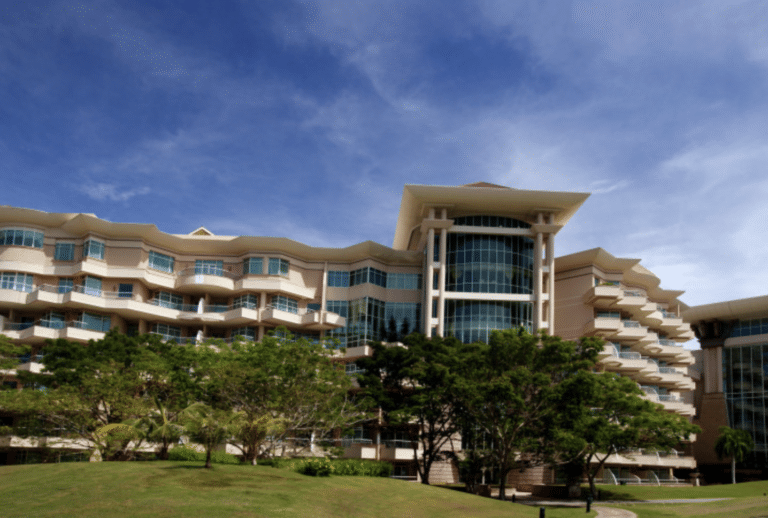
Many industrial and commercial properties are located within condominiums and run by condo boards. In a condominium property, a landowner owns their own property/bay within the property, but they legally own a portion of the common property as well. Condo boards use a “per unit” factor breakdown based on the percentage of ownership. Condominium land ownership does not always have liabilities clarified outside regular expenses.
The majority of commercial condo boards do not clarify environmental responsibilities. Is conducting an environmental assessment the responsibility of the condo board or the responsibility of a single unit owner? Since environmental assessments are usually triggered by transactions, individual condo owners are conducting assessments when needed. Concepts such as subject property, adjacent land, and property boundaries are challenging for assessments on condominium properties. Owners and consultants are left to navigate these situations as regulators or the laws do not provide guidance on how to assess these properties.
Commonly encountered problems are:
Redundant Assessments
Different landowners or purchasers can be completing individual assessments on the same properties in separate bays again and again. While conducting multiple Phase I ESAs is manageable, conducting numerous Phase 2 ESAs is not only unnecessary, but also expensive.
Unclear Subject Site Definitions
Is the Subject Site the entire condominium property or the single bay/building? Based on the answer to this question, consultants can understand condominium liability in different ways. Is the Subject Property the entire property (red boundary) or only the eastern end bay (green boundary)?
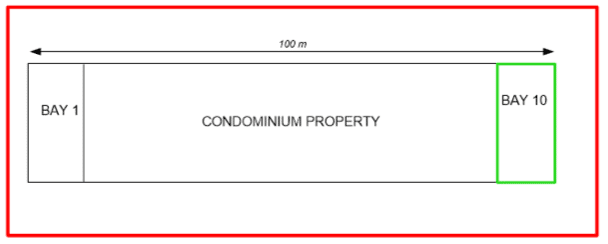
Condominium property – Unclear Subject Site Definitions
Unclear Adjacent Property Definition
Large condominium properties make it difficult to address all adjacent properties of concern in a practical and economically feasible way. Depending on the definition of the subject property and the scope of the assessment, subsurface investigations can be triggered even for owners of commercial/industrial condos located at a significant distance from an adjacent property of concern.
Should the owner of Bay 10 conduct a Phase 2 investigation triggered by the proximity of the gas station on the other end of a condominium property?
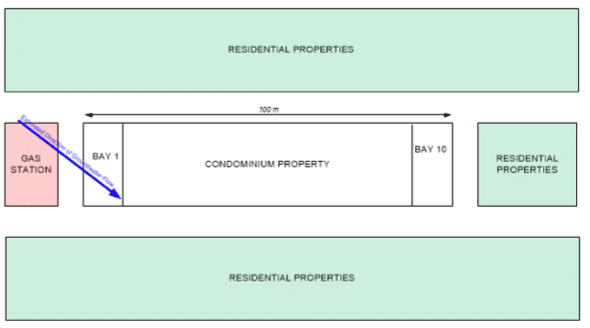
Condominium – Unclear Adjacent Property Definition
Offsite Contamination Migration
Is Bay 10 considered to be a contaminated property because of the fact that the property is part of a condo although there is no contamination underneath?
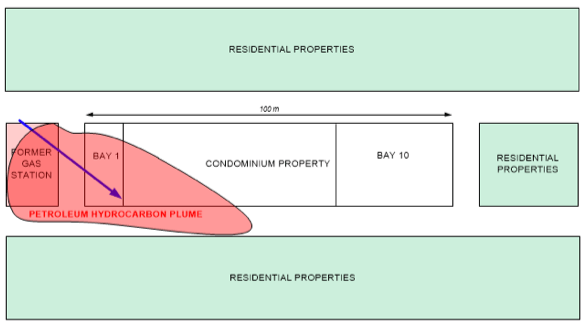
Condominium property – Offsite Contamination Migration
Pre Existing Contamination
- What if contamination on one condo or the common property was present prior to the condo board being established?
- Who is responsible for pre existing contamination on a condominium property?
- Is the cost of investigation/remediation being divided equally between the owners, should it be divided and assigned based on the percentage of ownership?
- Should the owner of Bay 10 pay more because he owns more land or should the owner of Bay 1 pay more because the majority of the contamination is under his property
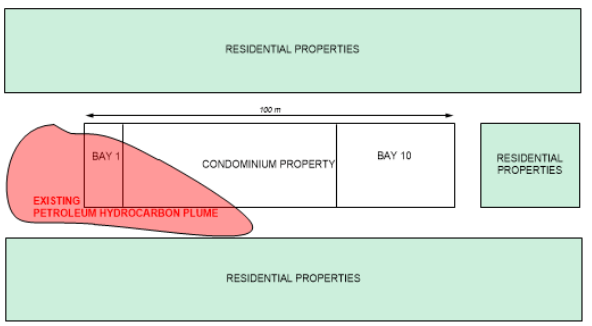
Condominium property – Pre Existing Contamination
- In the example above, what if the owner of Bay 10 wants to sell?
- What is his responsibility under EPEA?
- What is his responsibility to the condo board?
- What is his responsibility to the new owner?
As always the answer is to complete proper due diligence prior to acquisition in order to understand your environmental liabilities. Prior to buying land or establishing a condo board, conduct a thorough subsurface investigation.
The goal is not to have a Phase I completed with no further recommendations so your transaction goes through as soon as possible; the goal is to complete a complex subsurface investigation and confirm through actual soil and groundwater samples that the land you are about to purchase and become responsible for is clean. This is especially important when you are about to enter into a property such as a condominium property where the decision is not 100% yours or when you are about to establish a condo board where you have certain legal responsibilities.
If nothing else the property will have a Baseline Environmental Assessment that will be used to determine pre existing conditions. And with a clean Baseline Study you should have no problem obtaining pollution insurance that would protect everybody against future environmental liabilities.
Environmental Site Assessments should be conducted regularly to make sure investigations are consistent, to ensure one tenant is not contaminating the common property and prevent the cost to be carried by the first owner that carries a transaction. In a world where environmental requirements become more and more stringent and remediation costs are increasing, managing your environmental liability is a MUST.